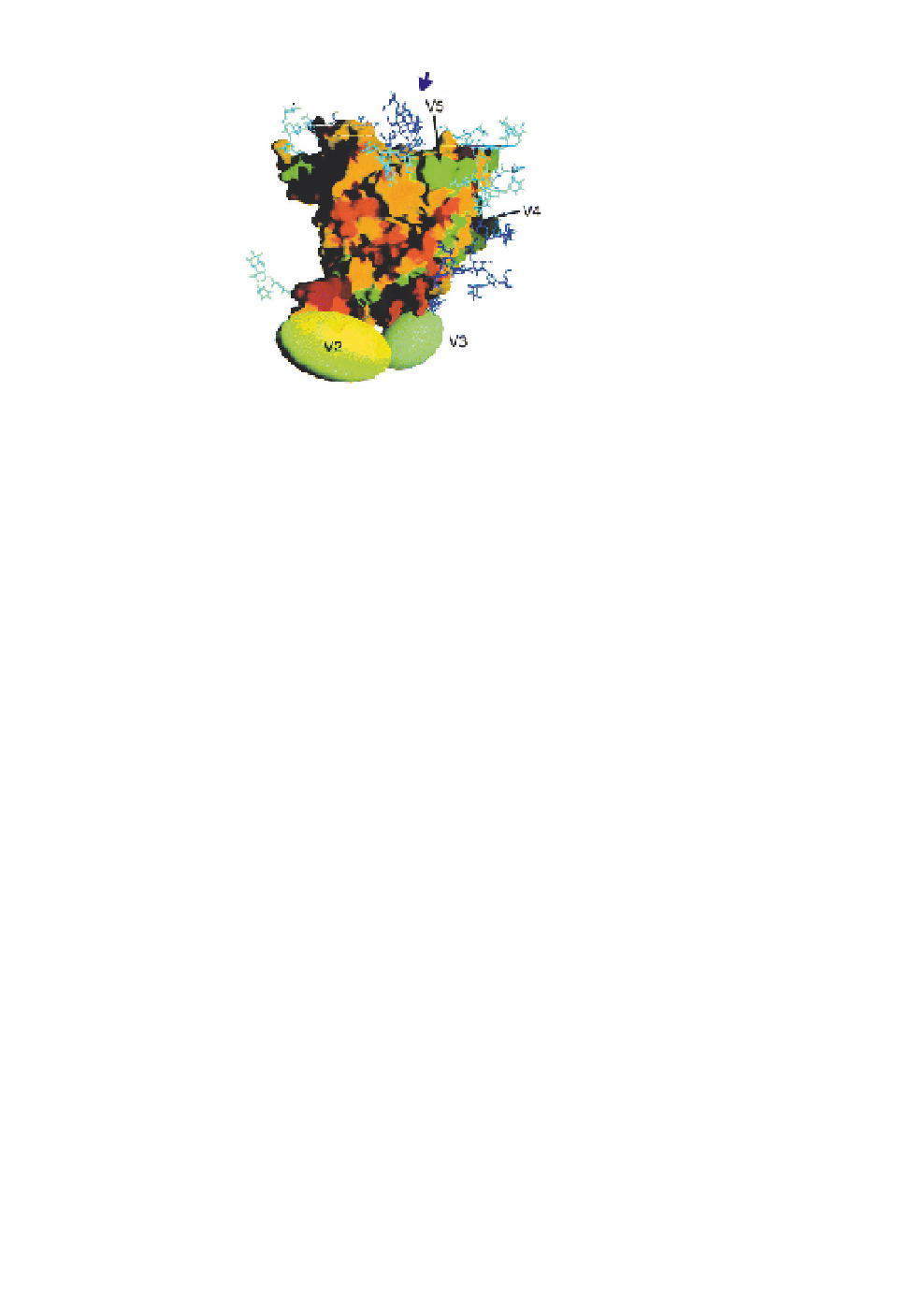Biology Reference
In-Depth Information
High Mannose Sugar
Complex
Carbohydrate
Fig. 8.
The molecular surface of the gp120 core, including the modeled
N-terminal residues, V4 loop, and carbohydrate structures, are shown as pre-
sented by Wyatt
et al
.
77
The outer domain of gp120 is heavily decorated with
complex carbohydrates (blue) and terminal mannose sugars (dark blue). The
molecular surface of gp120 is color-coordinated to demonstrate the variabil-
ity in the Env: red indicates residues conserved among all primate immun-
odeficiency viruses; orange indicates residues conserved in all HIV isolates;
yellow indicates some degree of variability; and green indicates significant
variability among all HIV isolates.
site without destroying the proper folding and conformation of Env.
As mentioned above, there are four
-2 strand corresponds
to approximately amino acid residues Cys-119 to Thr-123,
β
strands:
β
β
-3 cor-
responds to approximately Ser199 to Ile-201,
β
-20 extends from
amino acid residues 422-Gln to 426-Met, and
-21 extends from
amino acid residues 431-Gly to 435-Tyr relative to HXB-2. The V1
and V2 loops emanate from the first pair of
β
strands (Cys-126 to
Cys-196) and a small loop extrudes from the second set of
β
strands.
This small loop extends from amino acid Trp-427 to Val-430. The H-
bonds between
β
-21 are the only connections between
domains of the lower half of the protein (joining helix
β
-2 and
β
-1 to the CD4
BS). Based on these structural features, we have designed a series of
deletions within the small loop of the bridging sheet to further expose
the CD4 binding site. In addition, we are evaluating deletions in the
large loop (i.e. V1 and V2 loops) either alone or in conjunction with
α


